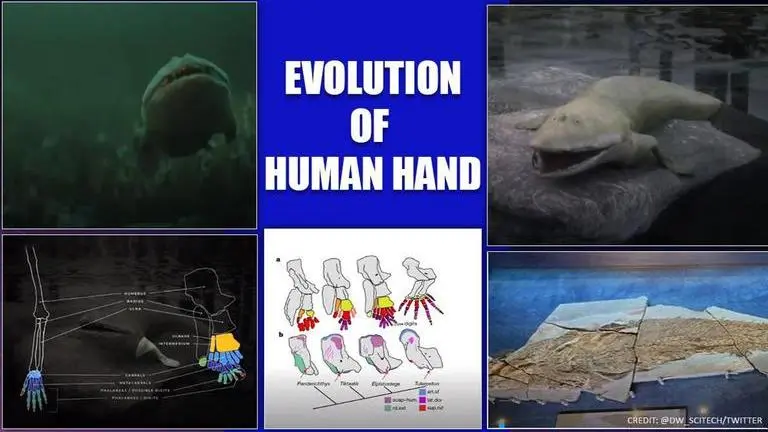Updated 20 March 2020 at 14:00 IST
Ancient fish fossil discovered in Canada reveals evolution of human hand
In an astounding discovery, an ancient fish fossil, Elpistostege happens to reveal hidden secrets and sheds light on the evolutionary origins of the human hand.
- Science News
- 3 min read

In an astounding discovery, an ancient fish fossil happens to reveal hidden secrets regarding the evolutionary origins of the human hand. An ancient fossil is giving scientists an insight into how the human hand must have evolved from the fins of a fish. It has often been mentioned of the missing link between fishes and humans.
Elpistostege fish
An exceptional fossil of a very ancient fish has surprisingly revised the story of the origin of humans. Found in Miguasha, Canada, the ancient fossil of the Elpistostege fish has pitched in a notable insight regarding evolution of the bones in human hands.
Scientists have discovered an ancient fish fossil in Canada that helps us understand how the human hand ✋ evolved from fish fins 🐟 pic.twitter.com/ZKWAuvzx5J
— DW Science (@dw_scitech) March 19, 2020
Advertisement
Remarkable Nature
The revealing connection between the fish specimen and humans was carried out and brought forward by an international team of palaeontologists from Flinders University, Australia and Universite du Quebec a Rimouski, Canada. The study was published in the science journal Nature, titled as 'Elpistostege and the Origin of the Vertebrate Hand.' Elpistostege has derived out the missing link between during the fish to the tetrapod transition.
Identified for the first time in an Elpistostege fish, the 1.5 metre long fish fossil has trapped skeleton of the pectoral fin. With the use of high energy CT-scans, the skeleton revealed the presence of a humerus (arm), radius and ulna (forearm), rows of carpus (wrist) and phalanges organized in digits (fingers).
Advertisement
John Long, Strategic Professor in Palaeontology at Flinders University Professor quoted: "Today we announce in the journal Nature our discovery of a complete specimen of a tetrapod-like fish, called Elpistostege, which reveals extraordinary new information about the evolution of the vertebrate hand. This is the first time that we have unequivocally discovered fingers locked in a fin with fin-rays in any known fish. The articulating digits in the fin are like the finger bones found in the hands of most animals.”
He further added: “This finding pushes back the origin of digits in vertebrates to the fish level, and tells us that the patterning for the vertebrate hand was first developed deep in evolution, just before fishes left the water.”
History
The name, Elpistostege was originally given from just a small part of the skull roof, found in the fossiliferous cliffs of Miguasha National Park, Quebec. In 1938, it was described as belonging to an early tetrapod. In 1985, the other part of the skull of this enigmatic beast was identified and described it as an advanced lobe-finned fish. Finally in 2010, the brand-new complete, remarkable specimen of Elpistostege was discovered.
Published By : Vishal Tiwari
Published On: 20 March 2020 at 14:09 IST
